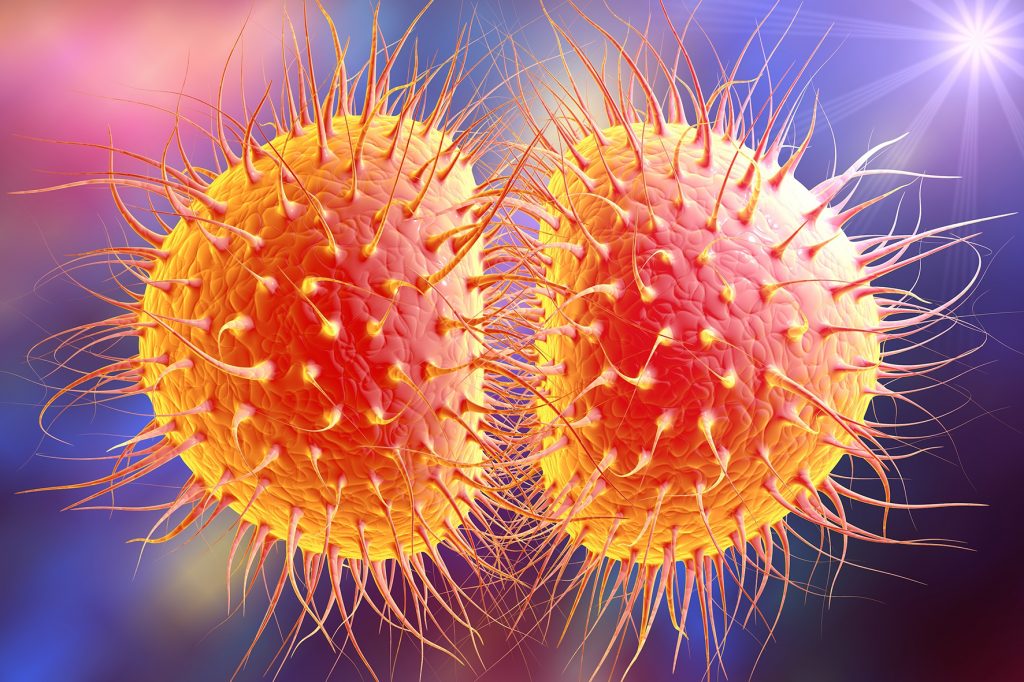Sitafloxacin demonstrates excellent in vitro activity against a global panel of antimicrobial-resistant and multidrug-resistant Neisseria gonorrhoeae

The World Health Organization (WHO) estimated in 2012 that 78 million new cases of urogenital gonorrhoea occur among adults annually.1 The emergence of N. gonorrhoeae resistant to ceftriaxone, the empiric antibiotic of choice for gonorrhoea, is a major public health concern.2 The rise in ceftriaxone resistance has prompted the initiation of dual therapy using ceftriaxone (200 to 500mg x 1 dose) and azithromycin (1gm to 2gm x 1 dose) – especially in well-resourced settings.3 However, treatment failure using this combination therapy has also been reported.4
Fluoroquinolones, specifically ciprofloxacin and ofloxacin, have been used as alternative treatment options for gonorrhoea.3 However, resistance to these older fluoroquinolones has also emerged worldwide.5 Sitafloxacin is a newer-generation quinolone used mainly for respiratory tract infections and urogenital infections in Japan.6 Information about its in vitro activity against N. gonorrhoeae remains limited. A recent publication investigated the activity of sitafloxacin against a global gonococcal panel consisting of 250 isolates cultured from 1991 to 2013.7 The minimum inhibitory concentration (MIC, mg/L) of sitafloxacin was determined using agar dilution technique. Time-kill curve analyses were also performed for sitafloxacin and four international WHO N. gonorrhoeae reference strains to evaluate the bactericidal activity of sitafloxacin.
The MICs for sitafloxacin ranged from <0.001 to 1 mg/L, with the highest MIC (1 mg/L) detected in only one isolate. Sitafloxacin was found to be effective against all multidrug-resistant (MDR) and extensively drug-resistant (XDR) strains. The three XDR strains with high-level resistance to ceftriaxone and most other antimicrobials had sitafloxacin MICs ranging from 0.25 to 0.5 mg/L.
When sitafloxacin cross-resistance with ciprofloxacin was assessed, a high correlation between the MICs of sitafloxacin and ciprofloxacin was found. That is, the isolates with high MICs for ciprofloxacin also had high MICs for sitafloxacin. However, it must be noted that the MIC distribution for sitafloxacin was substantially lower (<0.001 to 1mg/L) compared to ciprofloxacin (<0.002 to >32 mg/L). Although ciprofloxacin resistance mutations clearly increased the MICs of sitafloxacin, the authors emphasized that the MIC for sitafloxacin remained <1.0 mg/L despite many isolates having an MIC >32 mg/L for ciprofloxacin (n = 92).
Sitafloxacin was rapidly bactericidal. Three of the WHO reference strains were highly sitafloxacin susceptible. The WHO F (MIC <0.001 mg/L), WHO P (MIC = 0.002 mg/L) and WHO O (MIC = 0.004 mg/L) strains were rapidly killed at concentrations higher than the MIC. The fourth reference strain (WHO X) had an elevated MIC for sitafloxacin (0.5 mg/L); however, sitafloxacin’s bactericidal activity was similar and as rapid as the highly susceptible strains when this concentration was exceeded.
This study is the first comprehensive evaluation of the in vitro activity of sitafloxacin to a temporally, genetically and geographically diverse panel of N. gonorrhoeae. The high susceptibility suggests that sitafloxacin might be an option for future oral therapy of gonorrhoea. However, because sitafloxacin MICs were to some extent affected by ciprofloxacin resistance, the authors acknowledged that sitafloxacin may not be an appropriate first line monotherapy. Sitafloxacin may serve as a valuable component of new dual antimicrobial combinations and for cases of ceftriaxone resistance or allergy. Further research, including sitafloxacin resistance breakpoint analyses and synergy studies, as well as randomized controlled trials are warranted.
PMID: 29154480 (Johnsson A, et al. APMIS. 2018 Jan;126(1):29-37.)
Source: https://www.ncbi.nlm.nih.gov/pubmed/29154480
References:
- Newman L, Rowley J, Vander Hoorn S, et al. Global Estimates of the Prevalence and Incidence of Four Curable Sexually Transmitted Infections in 2012 Based on Systematic Review and Global Reporting. PLoS ONE. 2015;10(12):e0143304.
- Unemo M. Current and future antimicrobial treatment of gonorrhoea – the rapidly evolving Neisseria gonorrhoeae continues to challenge. BMC Infect Dis. Aug 21 2015;15:364.
- Workowski KA, Bolan GA. Sexually transmitted diseases treatment guidelines, 2015. MMWR Recomm Rep. Jun 5 2015;64(RR-03):1-137.
- Fifer H, Natarajan U, Jones L, et al. Failure of Dual Antimicrobial Therapy in Treatment of Gonorrhea. N Engl J Med. Jun 23 2016;374(25):2504-2506.
- Knapp JS, Fox KK, Trees DL, Whittington WL. Fluoroquinolone resistance in Neisseria gonorrhoeae. Emerg Infect Dis. Jan-Mar 1997;3(1):33-39.
- Keating GM. Sitafloxacin: in bacterial infections. Drugs. Apr 16 2011;71(6):731-744.
- Jonsson A, Foerster S, Golparian D, et al. In vitro activity and time-kill curve analysis of sitafloxacin against a global panel of antimicrobial-resistant and multidrug-resistant Neisseria gonorrhoeae isolates. APMIS. Jan 2018;126(1):29-37.










